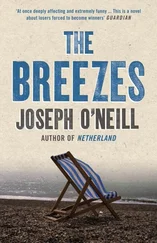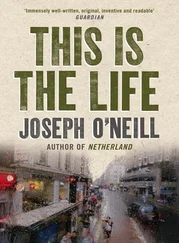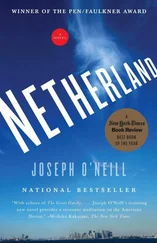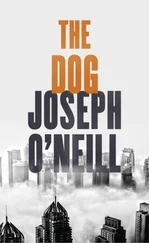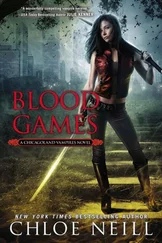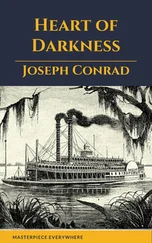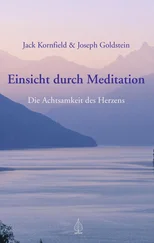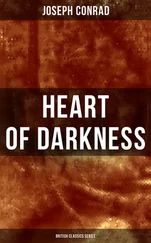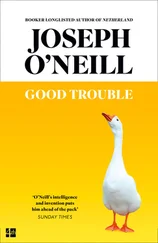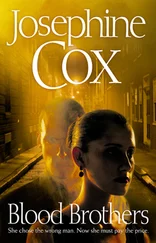Even allowing for the fact that the ’seventies were much more recent than a night in March 1936, I was struck by the difference between the vociferously retrospective attitude of Catholic families to the political violence they’d suffered and that of Admiral Somerville’s Protestant descendants, who didn’t want to know the names of the killers and displayed a reticence about the past that almost amounted to a denial of their victimhood. It was a curious state of affairs, since the ascendancy class, with its preoccupation with the glamour of its own pedigree, characteristically took a lively interest in matters of family history.
At around that time, May 1999, I came across a book, published the year before in England, by a historian named Peter Hart — a Protestant name, I couldn’t help thinking — called The IRA and Its Enemies . Flicking through the index, my eye was drawn to a cluster of references to my grandfather’s cousins, the murdered Coffey brothers. Then I was surprised to encounter, on the relevant chapter’s first page, three names mentioned by my grandmother on our visit to Dunmanway the previous summer: Buttimer, Gray and Fitzmaurice.
It turned out that Grandma’s account of what had happened to these men was slightly inaccurate. It was true that Gray and Buttimer had been shot dead; however, they were shot dead at their homes on Main Street, Dunmanway and not, as Grandma recalled, in Dunmanway Square. David Gray, a chemist, died from multiple gunshot wounds inflicted by a gang of men who burst open his door. The same gang hammered on the door of James Buttimer, an eighty-two-year-old retired draper who was Gray’s neighbour; when Buttimer, who answered the door, failed to step outside, he was shot in the face and died at once, his brains and teeth blown out. And although Grandma may have been right to say that a man called Fitzmaurice left the country and sold his house to Henry Smith as a result of these killings, it was more likely that Fitzmaurice fled because he had barely escaped death himself that night and because his brother, a seventy-year-old solicitor called Francis Fitzmaurice, had been shot twelve times in his doorway while his wife looked on. These incidents did not take place during the Black and Tan War, as Grandma believed, but in the peacetime of April 1922, four months after the making of the Treaty with the British. To be exact, Buttimer and Gray and Fitzmaurice were all killed on the night of 26/27 April, a night that also saw attempts on the lives of a shopkeeper, George Applebe Bryan; a teacher, William Morrison; and a draper called William Jagoe. (I’d come across this name before: Mrs Salter-Townshend’s husband, according to Burke’s Irish Family Records , was the son of one William Jagoe Salter.) The following night saw further homicides: the farmers and neighbours Robert Howe and John Chinnery were killed at their homes in Ballaghanure; slightly further east, in Ballineen, a sixteen-year-old called Alexander Mackinley was shot three times in the back of the head as he lay in bed; a curate, Ralph Habord, was shot on the steps of the rectory at Murragh; a farmer, John Buttimer, and a farm servant, Jim Greenfield, were shot in Caher, a townland to the west of Ballineen: Buttimer in the head and stomach and Greenfield, lying in bed, in the back of the head. All of the above-named victims of violence lived in the Dunmanway-Ballineen- Enniskean stretch of the Bandon valley: Lynch — O’Neill territory, you might say. On the night that followed, another fatal shooting occurred ten or so miles south of Enniskean, in Clonakilty: there, a sixteen-year-old called Robert Nagle was killed at his home on MacCurtain Hill. Finally, on the night of 28/29 April, two nights after the Dunmanway killings, John Bradfield, a farmer from Killowen, near Murragh, was roused from his bed, told to stand up, and shot in the back of the neck; his cousin and neighbour, Henry Bradfield would also have been killed had he not fled earlier. The name Bradfield rang a bell; and it turned out that John and Henry were cousins of Thomas Bradfield, whose shooting the previous year the Cork Examiner had connected, geographically at least, with that of the Coffey brothers.
All told, ten men had been killed and one wounded in the space of three days. They were all Protestants. No Catholic — not one pro-Treaty ‘Free Stater’ or landlord or perceived informer — was even shot at.
Viewed broadly, the massacre was the vengeful expression of a sense of grievance arising from recent lethal attacks on Catholics in Belfast, outrages such as the killing of Canon Magner in the Anglo-Irish War, and agrarian discontent with the landlord class (to which, incidentally, few of the dead belonged). Its actual spark, though, was the death on the night of 25/26 April of Michael O’Neill (no relation), who was shot while leading a break-in by the IRA Bandon battalion into a house in Ballygroman, between Bandon and Cork. At daybreak, the three male occupants of the house — the well-known unionists Thomas and Samuel Hornibrook (father and son) and Captain Herbert Woods (son-in-law of Thomas Hornibrook) — were taken captive by the IRA. Woods, the man who’d shot Michael O’Neill, was killed that day and the two Hornibrooks the next day. Ballygroman House was burned to the ground. Judging from the subsequent massacre, these killings were evidently not deemed to be a sufficient reprisal.
In April 1922, Jim O’Neill was twelve and a half years old and living in Kilbrittain. He would have learned of the killings from tense adult mutterings and coded kitchen discussions. What he may not have picked up was that the deadly events were deeply rooted in his own family. The IRA had broken into Ballygroman House in the first place because Woods and the Hornibrooks were suspected of involvement in a shadowy counter-revolutionary loyalist underground, the Protestant Action Group. The most notable of the killings attributed to the Protestant Action Group, the ones that cried most loudly for vengeance, were the unrequited deaths, in February 1921, of Jim O’Neill’s first cousins, James and Timothy Coffey.
But there was a twist: the Coffeys’ killers were not the Protestant Action Group, an entity that was very probably mythic rather than real. The brothers were killed by members of a Royal Irish Constabulary undercover ‘special squad’ disguised as farmers; not, in other words, by Captain Woods or the Hornibrooks.
These three dead Protestants were multiply entombed. Their violent deaths were not reported in the Irish newspapers; their bodies were buried in secret somewhere in West Cork; and their remains, unlike those of northern Catholics shot dead as informers, were never officially missed.
Although a few prominent republicans voiced disapproval of the April massacre, its perpetrators, who were almost certainly active members of the IRA, were never identified or ‘brought to justice’: not by the IRA, which at the time was effectively responsible for law and order in Cork, nor by history. The April massacre, as Peter Hart observed, was as unknown as the Kilmichael ambush was celebrated. Grandma, with her phenomenal memory and longevity, represented a near-exception to the general non-remembrance; but in her mind the sectarian slaughter had survived only as a story of the curious succession of families to occupy a town house in Dunmanway. In this sense, the April massacre was comparable to the Adana massacre of 1909, which lived on in the Dakad family as a tale of eating ortolans in Cyprus.
But there were further and deeper parallels between events in Cork and Cilicia. The April shootings in the Bandon valley were accompanied by a wave of death threats against Protestants, and the combination caused a panicked exodus from the county, with trains and boats out of Cork packed with refugees for a fortnight. Only six months before, in November 1921, just such scenes had taken place on the jetties of Mersin, as Cilicia’s terrified Armenians and other Christians fled the country en masse. The migrant groups in Ireland and Turkey were remarkably similar. Both were minorities regarded as a fifth column of the foreign enemy; both suffered a demographic cataclysm unmentioned by dominant nationalist histories; and finally, both left a vestigial population in the new nation-state whose members instinctively understood that, whatever the political and constitutional affirmations to the contrary, their citizenship was a matter of indulgence and not of right. I’d always suspected that Admiral Somerville’s descendants’ lack of interest in knowing the identity of his killers reflected their belief that it didn’t really matter which meaningless Ryan or Murphy — or O’Neill — had pulled the trigger. Now I sensed that their disdain may also have been due to an inherited, self-preservative knowledge that to lay claim to certain kinds of justice, historical or political, was to overstep the mark; and I understood why Mrs Salter-Townshend had gone out of her way to characterize Castletownshend as sleepy fishing village of no political importance.
Читать дальше
Конец ознакомительного отрывка
Купить книгу

